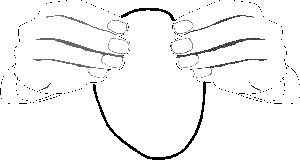 Home : Video course : Module 2: Video Housings : Video Housing Maintenance Home : Video course : Module 2: Video Housings : Video Housing Maintenance
The main requirements for effective field maintenance
are:
- Space
and lots of it, to lay your disassembled
equipment out so you can go over it methodically.
- Time
mistakes happen when you are rushed.
- Peace
and quiet: mistakes happen when you are
distracted.
- A clean environment
Beware drips of water
trapped under o-rings or behind the film advance lever.
- Good
light to see
what you are doing.
The same basic principles apply to photographic equipment
as you were taught about your diving equipment, only more so (Wash - Dry -
Store). Photo equipment is even more susceptible to ingress of water and needs
regular maintenance to ensure the integrity of pressure seals.
The increased level of salinity found in most tropical
locations can eat your camera alive. Ideally you should soak your gear in fresh
water as soon as you leave the water. Flushing is not enough; you should soak
for half an hour minimum, overnight if possible, and operate all the controls in
the rinse tank to ensure fresh water gets behind all the levers too.
 You
should never allow cameras to dry out before freshwater soaking. Abrasive salt
crystals will be left deposited on any part of your equipment allowed to dry out
and this can be especially harmful to hidden o-rings the next time you operate
the shaft they protect. So, keeping your housing damp, even with seawater if
that is all that is immediately available, is desirable. You
should never allow cameras to dry out before freshwater soaking. Abrasive salt
crystals will be left deposited on any part of your equipment allowed to dry out
and this can be especially harmful to hidden o-rings the next time you operate
the shaft they protect. So, keeping your housing damp, even with seawater if
that is all that is immediately available, is desirable.
You can do a complete maintenance cycle after every dive
but it is a much more accepted procedure to get into the habit of breaking down
your camera at the end of every working day, but this is a good philosophy if
limited to those parts that MUST be opened. True, if you check everything, any
plugs that have worked loose for instance are automatically put right, but you
also risk introducing foreign material that could potentially bridge O-ring
seals.
 In extreme
cases where equipment refuses to come apart, soak in a mild acidic solution such
as vinegar, operate controls. Resort to force, such as stilson wrenches, only as
a last resort. Most parts can be worked free with repeated manipulation. In extreme
cases where equipment refuses to come apart, soak in a mild acidic solution such
as vinegar, operate controls. Resort to force, such as stilson wrenches, only as
a last resort. Most parts can be worked free with repeated manipulation.

Check o-rings
for nicks etc. in good light
When you work an o-ring through your fingers to grease
it, it increases in size. You may need to leave it to resume its normal
shape.
 Think Security: If you must leave equipment unattended in hotel rooms,
don't make it easy to steal, chain it. It won't deter the determined thief but
it will deter the opportunist. Don't leave cameras out whilst the hotel room is
being cleaned. You will end up with a layer of dust over them. Think Security: If you must leave equipment unattended in hotel rooms,
don't make it easy to steal, chain it. It won't deter the determined thief but
it will deter the opportunist. Don't leave cameras out whilst the hotel room is
being cleaned. You will end up with a layer of dust over them.
Next >> Flooded Video Housings
|